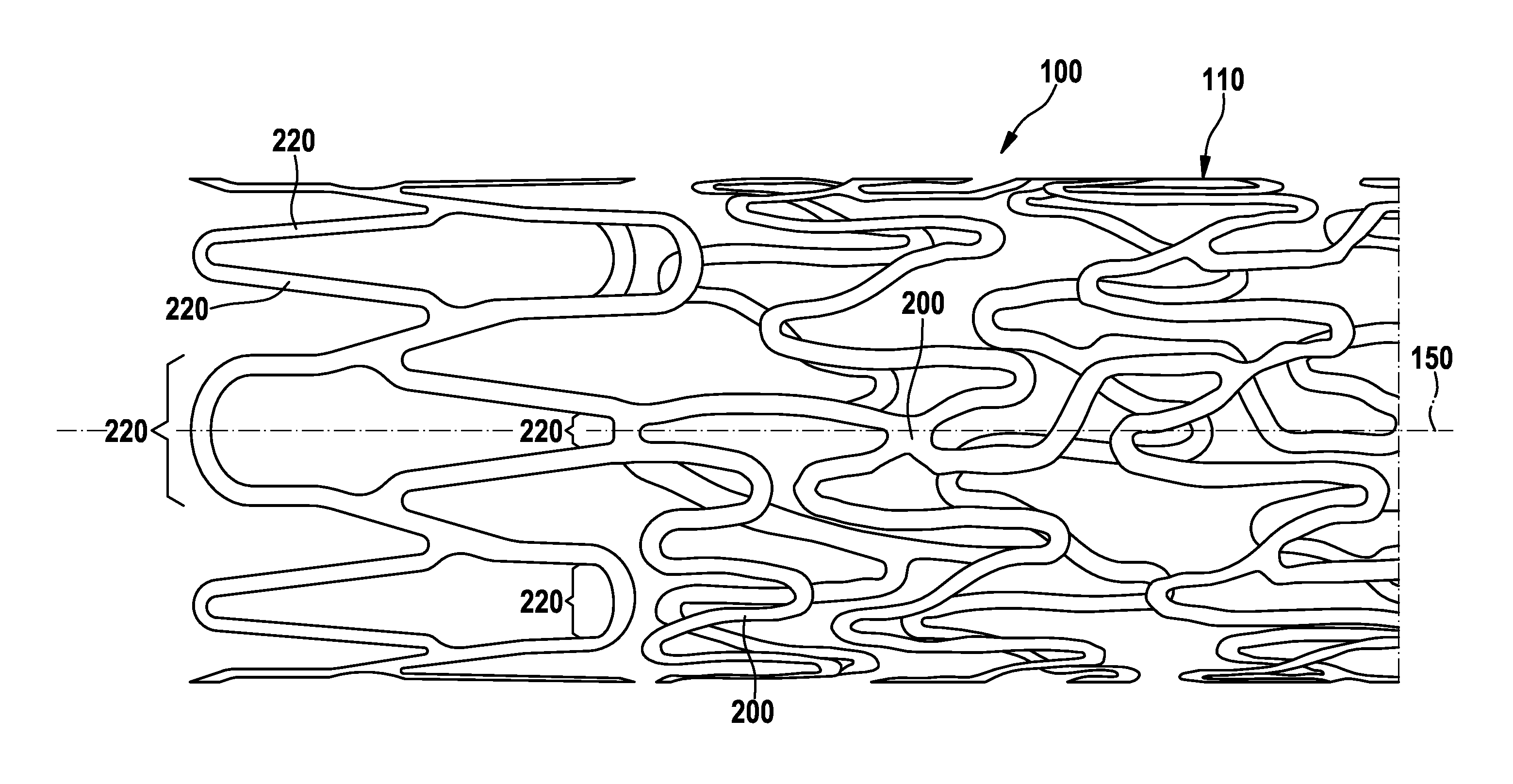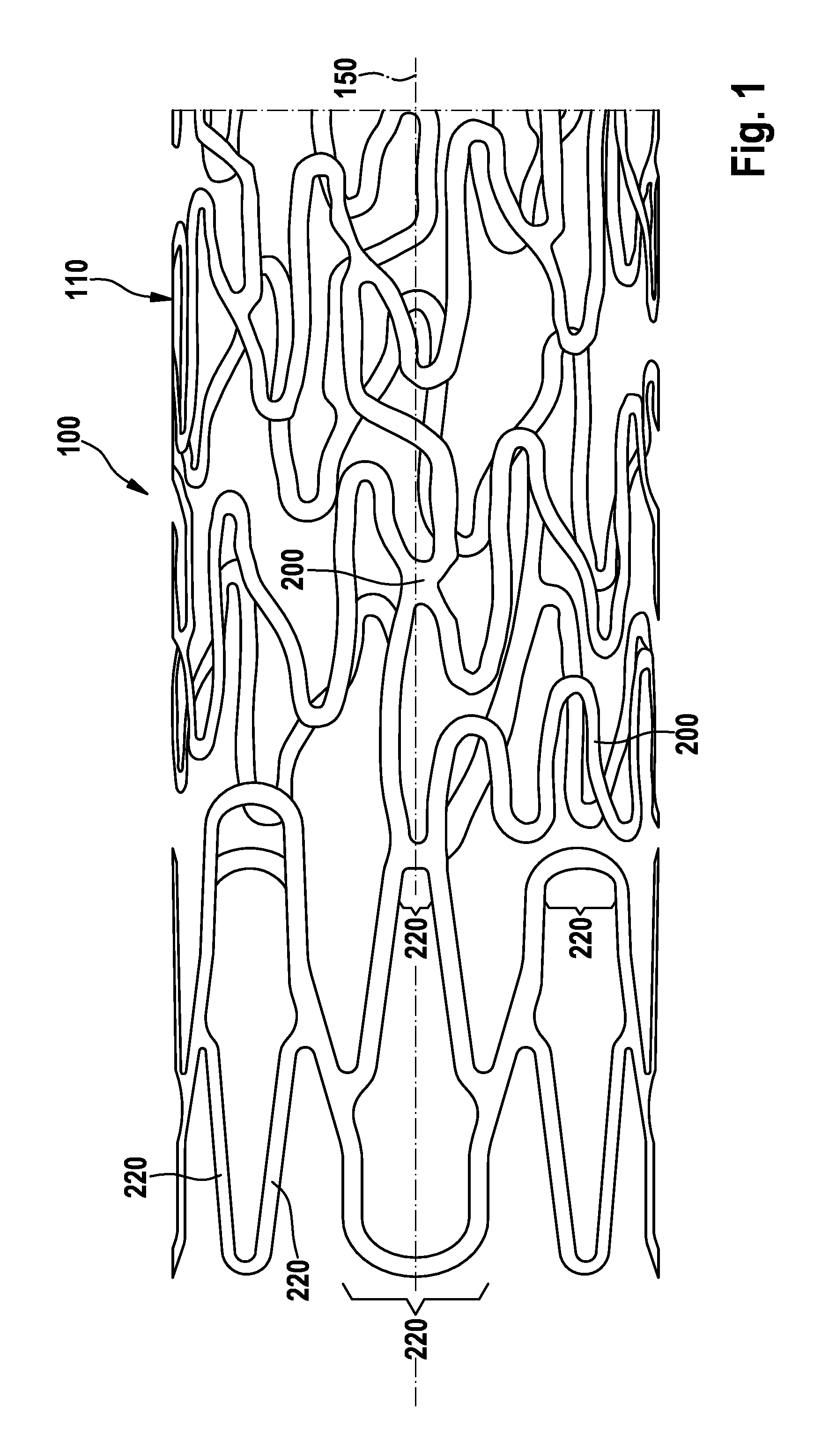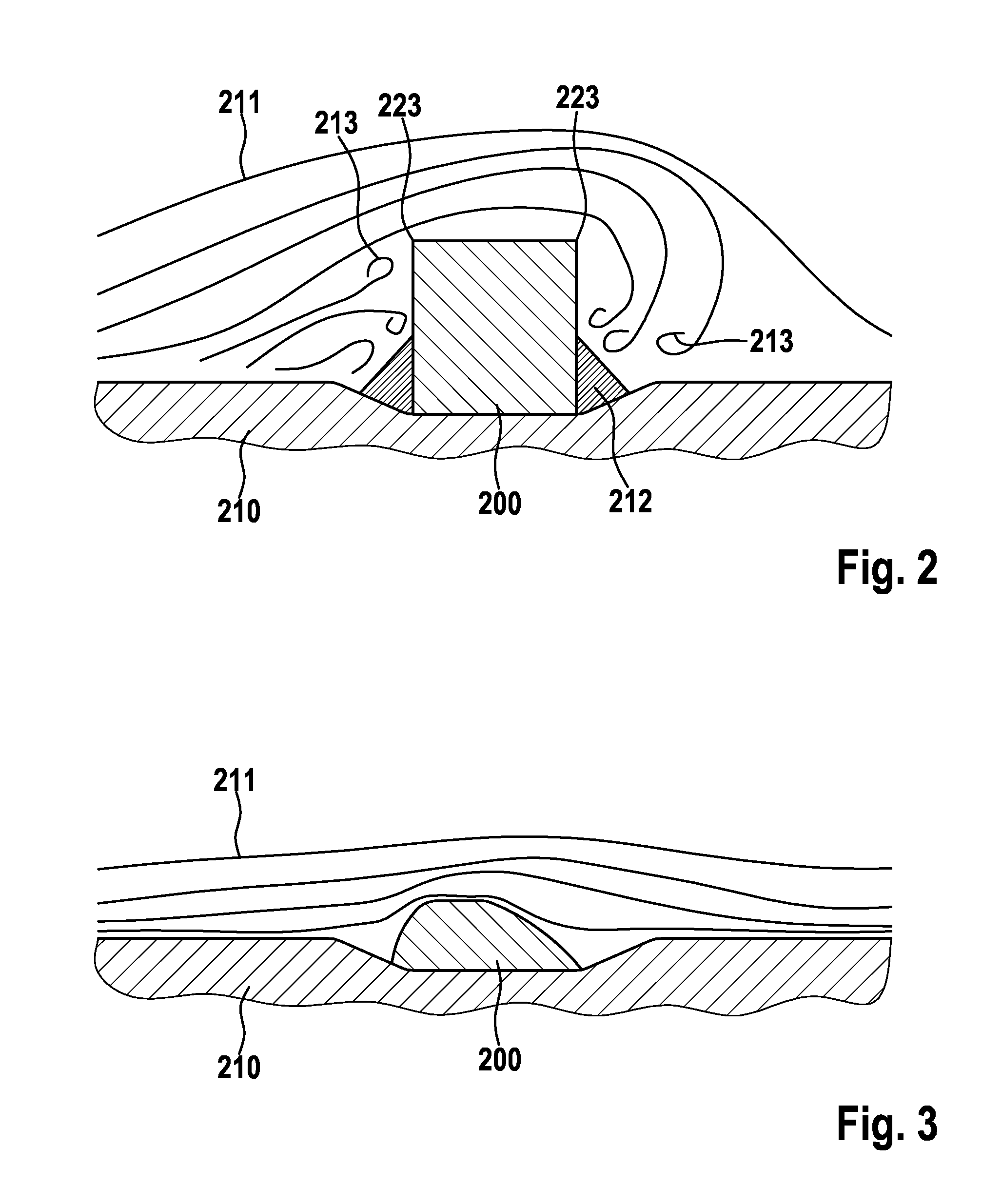Stent and Method and Device for Fabricating the Stent
a technology of stent and stent body, which is applied in the field of stent, can solve the problems of symmetrical curvature, inability to selectively treat the proximal end of the stent, and adverse effects of fluid flow, so as to reduce the risk of unwanted neointimal hyperlasia and arteriosclerosis, prevent injury, and minimize the pressure on the vascular wall
- Summary
- Abstract
- Description
- Claims
- Application Information
AI Technical Summary
Benefits of technology
Problems solved by technology
Method used
Image
Examples
Embodiment Construction
[0044]FIGS. 1 and 2 illustrate struts 200 such as those conventionally used in the support structure or lattice structure 110 of a stent 100. The invention here is not restricted to the design of the lattice structure 110 illustrated in FIG. 1; instead, the invention can comprise all stent structures that have struts and in which the longitudinal sections have at least one directional component that runs in the radial circumferential direction of the stent. This refers to those longitudinal sections 220 that, as shown in FIG. 1, do not run parallel to the longitudinal axis 150 of stent 100. This thus refers to longitudinal sections 220 that obviously run in a radial circumferential direction but also to the longitudinal sections that run obliquely relative to the longitudinal axis since these longitudinal sections have also a directional component that runs perpendicular to the longitudinal axis.
[0045]It is thus evident in FIG. 2 that the surfaces of the strut facing the outside of ...
PUM
| Property | Measurement | Unit |
|---|---|---|
| thickness | aaaaa | aaaaa |
| thickness | aaaaa | aaaaa |
| thickness | aaaaa | aaaaa |
Abstract
Description
Claims
Application Information
 Login to View More
Login to View More - R&D
- Intellectual Property
- Life Sciences
- Materials
- Tech Scout
- Unparalleled Data Quality
- Higher Quality Content
- 60% Fewer Hallucinations
Browse by: Latest US Patents, China's latest patents, Technical Efficacy Thesaurus, Application Domain, Technology Topic, Popular Technical Reports.
© 2025 PatSnap. All rights reserved.Legal|Privacy policy|Modern Slavery Act Transparency Statement|Sitemap|About US| Contact US: help@patsnap.com



